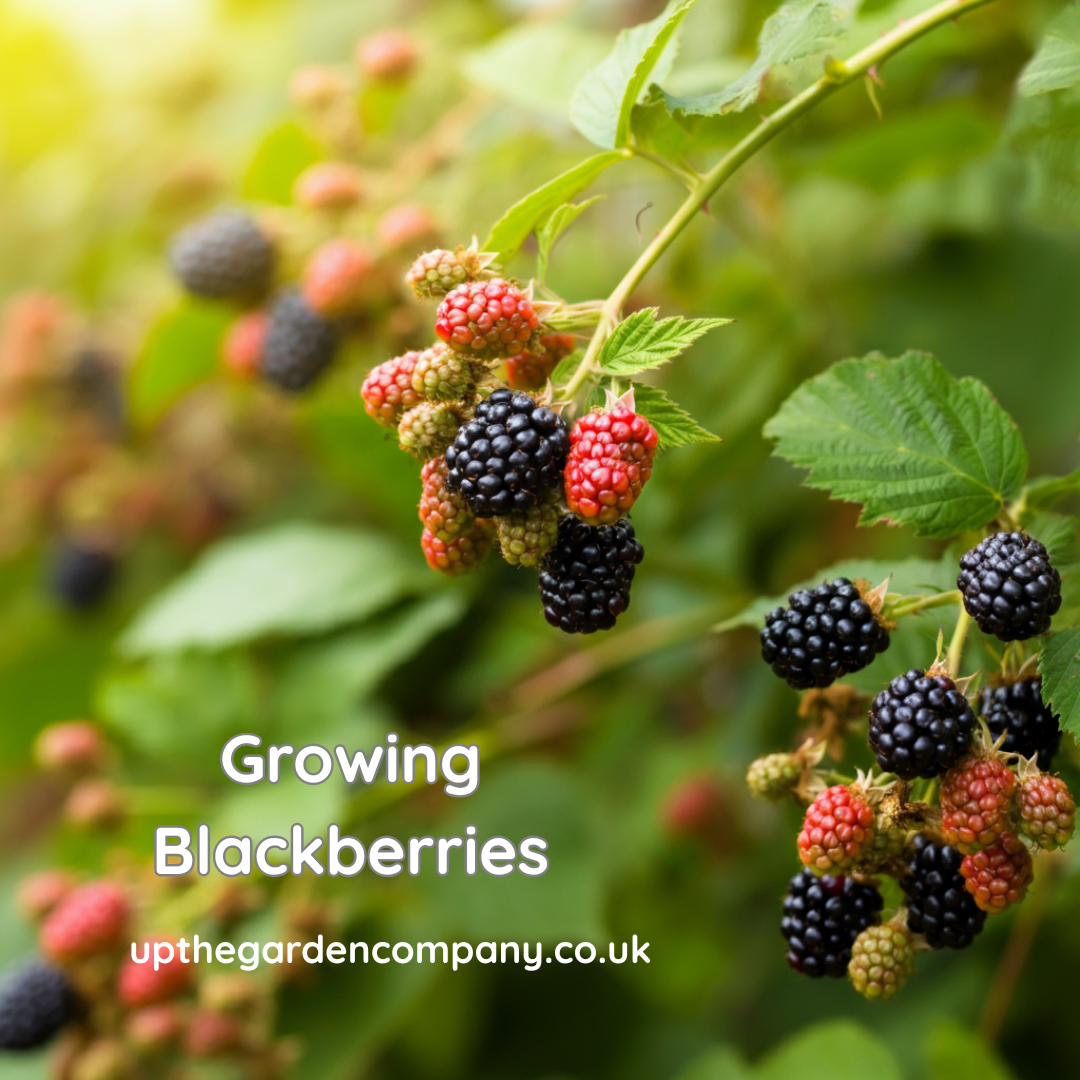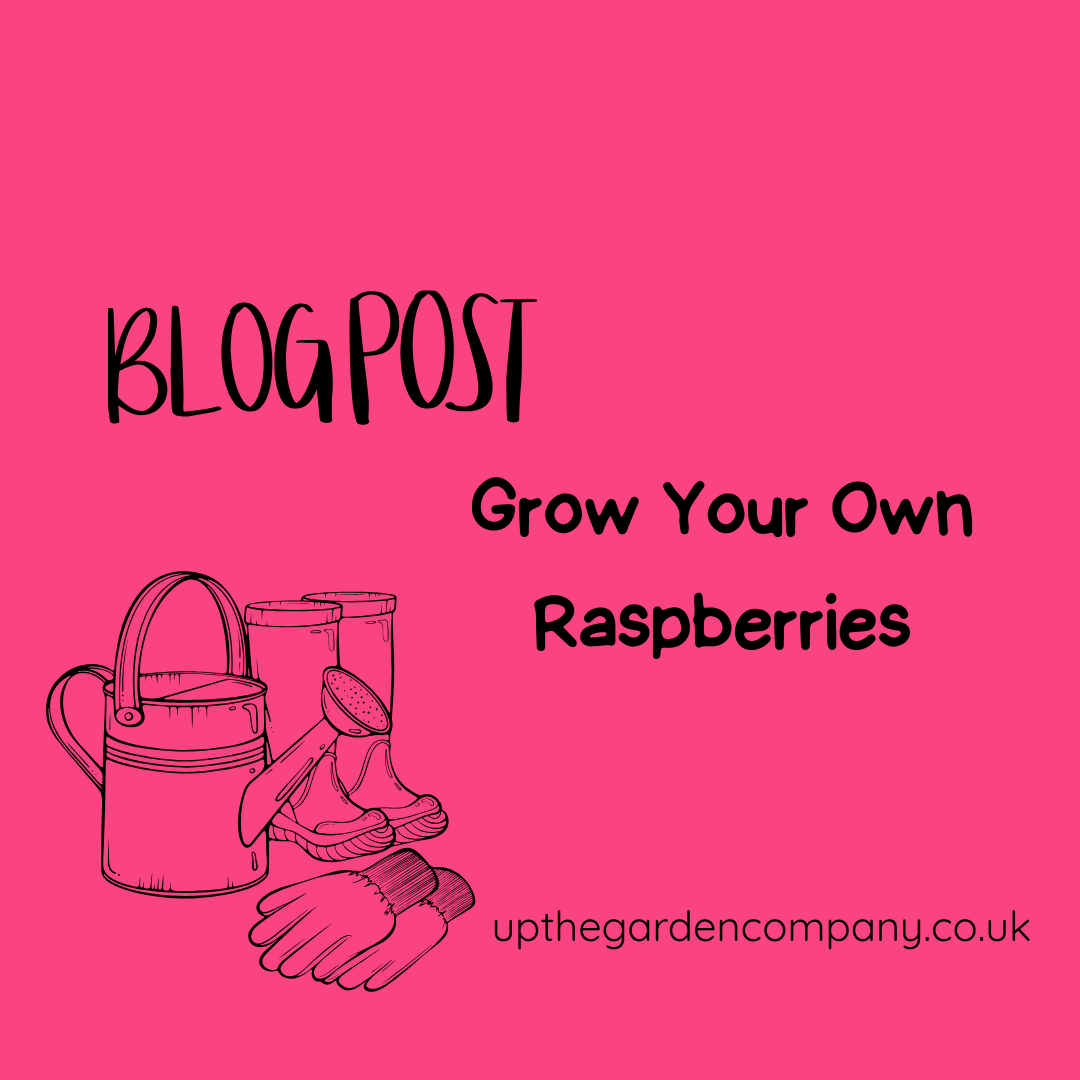September brings many garden treasures, but few are as rewarding as plump, juicy blackberries hanging heavy on the cane. These dark purple gems offer incredible flavour and impressive nutritional benefits, making them a must-have addition to any garden.
Fresh blackberries from your garden taste nothing like shop-bought varieties. They’re sweeter, more complex in flavour, and packed with nutrients that deteriorate quickly after picking. Plus, a single blackberry plant can produce fruit for 15-20 years, making it one of the best long-term investments you can make in your garden.
What Are Blackberries?
Blackberries belong to the Rubus genus, part of the rose family. These perennial plants produce long, arching canes that bear fruit in their second year before dying back. The plant then sends up new canes to replace them, creating a continuous cycle of growth and production.
Wild blackberries have been gathered for thousands of years across Europe, Asia and North America. Archaeological evidence shows people were eating blackberries as far back as 8,000 years ago. The Romans valued them highly, believing they could cure various ailments, whilst medieval monasteries cultivated them in their herb gardens.
Modern cultivated blackberries were developed in the 19th century, primarily in America. Plant breeders worked to create varieties with larger fruits, fewer thorns and better disease resistance than their wild cousins. Today’s garden blackberries offer all these improvements whilst maintaining the intense flavour that makes wild blackberries so special.
Growing Blackberries in Your Garden
Space Requirements
Blackberries need room to spread. Each plant requires approximately 1.5-2 metres of space along a fence or trellis system. The canes can reach 2-3 metres in height, so choose a spot where they won’t overshadow shorter plants.
A typical garden can accommodate 2-4 blackberry plants, which should provide plenty of fruit for a family. If space is limited, consider compact varieties that work well in large containers.
Best Growing Conditions
Blackberries thrive in full sun but tolerate partial shade. They prefer well-drained, slightly acidic soil with a pH between 5.5 and 6.5. Heavy clay or waterlogged soil can cause root problems, so improve drainage by adding compost or creating raised beds.
Choose a sheltered spot protected from strong winds. Blackberry canes are flexible but can snap in severe weather, especially when laden with fruit.
Planting and Care
Plant blackberries in late autumn or early spring when the soil isn’t frozen. Dig a hole twice the width of the root ball and the same depth. Add a generous amount of well-rotted compost to the planting area.
Space plants 1.5-2 metres apart and water thoroughly after planting. Apply a thick mulch around the base to retain moisture and suppress weeds.
Blackberries benefit from regular feeding. Apply a balanced fertiliser in early spring, followed by a potash-rich feed in summer to encourage fruit development. Keep the soil consistently moist but not waterlogged, especially during fruit formation.
Pruning Made Simple
Many gardeners worry about pruning blackberries, but it’s straightforward once you understand the basic principle. Blackberry canes are biennial – they grow in the first year, fruit in the second year, then die.
In late winter, cut all the old fruiting canes (those that bore fruit the previous summer) down to ground level. These will be darker and more woody than the new growth. Keep 4-6 of the strongest new canes and tie them to your support system.
During summer, pinch out the growing tips of new canes when they reach the top of your support. This encourages side shoots to develop, increasing your fruit yield.
Choosing the Right Varieties
Traditional Thorny Varieties
‘Bedford Giant’ produces large, sweet berries with excellent flavour. The canes are vigorous and thorny but very productive. This variety ripens in late August and early September.
‘Himalayan Giant’ offers massive berries and heavy crops. The thorny canes need strong support but reward you with exceptional harvests. Expect fruit from late August through September.
Thornless Varieties
‘Oregon Thornless’ produces medium-sized berries with good flavour and attractive cut-leaf foliage. The lack of thorns makes picking much easier, though yields may be slightly lower than thorny varieties.
‘Loch Ness’ combines thornless canes with excellent disease resistance. The berries are large, firm, and perfect for eating fresh or cooking. This variety crops heavily in late summer.
Compact Varieties
‘Baby Cakes’ grows just 1 metre tall, making it perfect for containers or small gardens. The dwarf canes produce full-sized berries with excellent flavour.
Each variety has its strengths. Thorny types typically offer better flavour and heavier crops, whilst thornless varieties make maintenance and harvesting much easier. Compact varieties suit small spaces but produce smaller overall yields.
Nutritional Benefits
Blackberries are nutritional powerhouses packed with vitamins, minerals and antioxidants. A 100g serving contains more vitamin C than oranges, plus significant amounts of vitamin K, manganese and fibre.
The deep purple colour comes from anthocyanins, powerful antioxidants that may help reduce inflammation and support heart health. Blackberries also contain ellagic acid, which research suggests may have anti-cancer properties.
Fresh blackberries provide natural energy from their fruit sugars whilst the high fibre content helps maintain steady blood sugar levels. They’re naturally low in calories but rich in nutrients, making them an excellent addition to a healthy diet.
Recipe Ideas and Uses
Fresh blackberries shine in both sweet and savoury applications. Eat them straight from the cane for the best flavour, or incorporate them into your cooking.
Classic blackberry and apple crumble makes excellent use of early autumn harvests. The tartness of cooking apples balances the sweetness of ripe blackberries perfectly. Add a handful of oats to the crumble topping for extra texture.
Blackberry jam captures the summer flavour for winter enjoyment. The high pectin content in blackberries means jam sets easily without artificial additives. Try adding a sprig of fresh thyme or lavender for a sophisticated twist.
For savoury dishes, blackberries pair beautifully with game, lamb, and strong cheeses. A simple blackberry sauce transforms roast duck or venison, whilst fresh berries add interest to autumn salads.
Freeze surplus berries on trays before transferring to bags. This prevents them sticking together and means you can use small amounts throughout winter. Frozen blackberries work perfectly in smoothies, baking, and cooked sauces.
Your Blackberry Journey Starts Here
Growing blackberries offers years of delicious harvests with relatively little effort. Start with one or two plants in a sunny, well-drained spot and provide simple support for the canes. Regular watering, annual feeding, and basic pruning will reward you with abundant crops.
Choose varieties that suit your space and preferences. If you’re new to growing blackberries, thornless varieties like ‘Loch Ness’ offer easier maintenance, whilst traditional thorny types like ‘Bedford Giant’ provide exceptional flavour.
Remember that patience pays off with blackberries. Your plants will establish in the first year and start producing meaningful crops in the second year. By the third year, you’ll enjoy the full potential of your blackberry patch.
Start planning your blackberry garden now. With proper preparation and the right varieties, you’ll be enjoying home-grown blackberries next September and for many years to come.
Further reading: Celebrate the Blackberry, When and How to Thin Your Fruit Trees, Grow Your Own: Best Fruits for Your Garden




